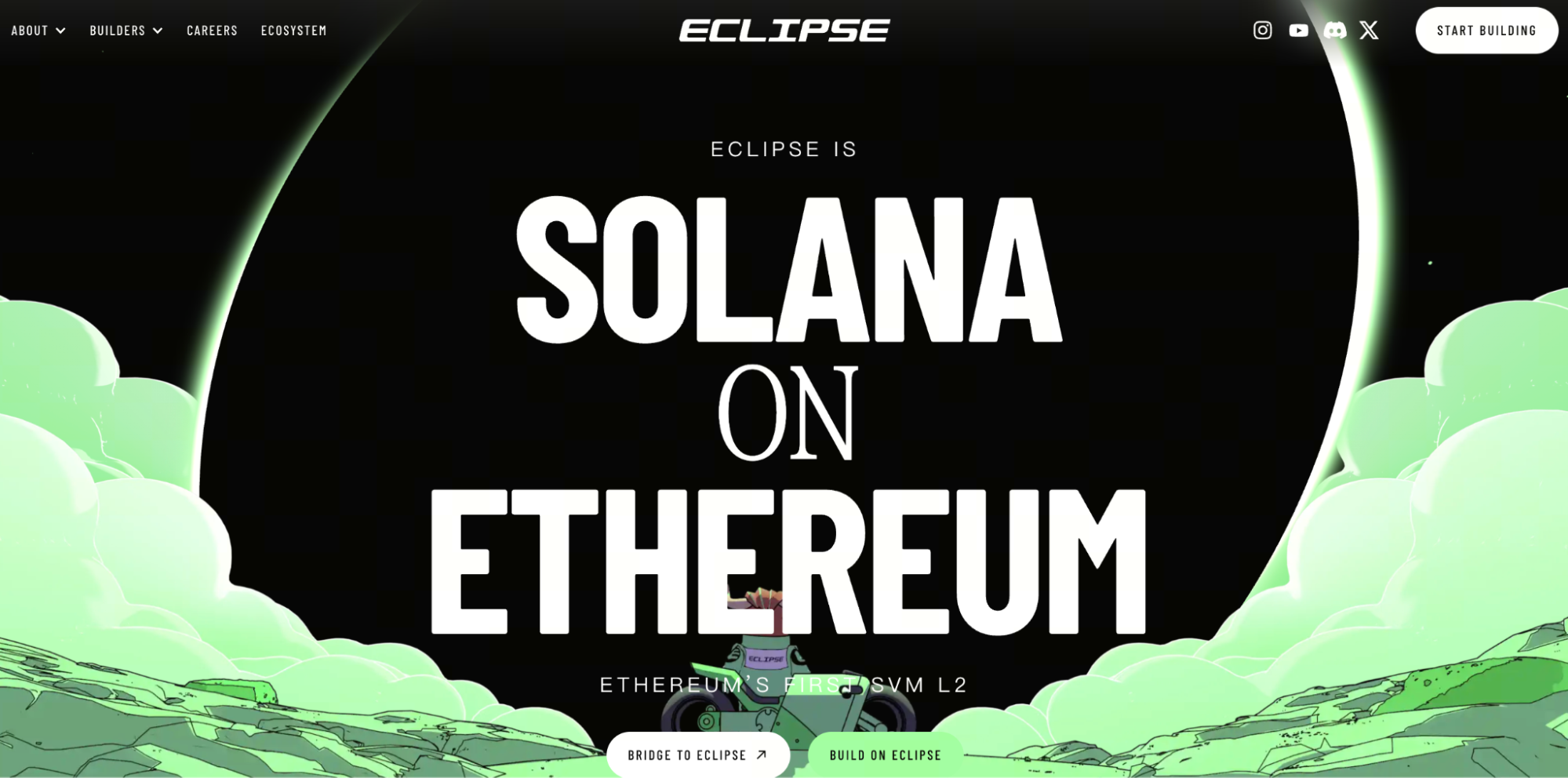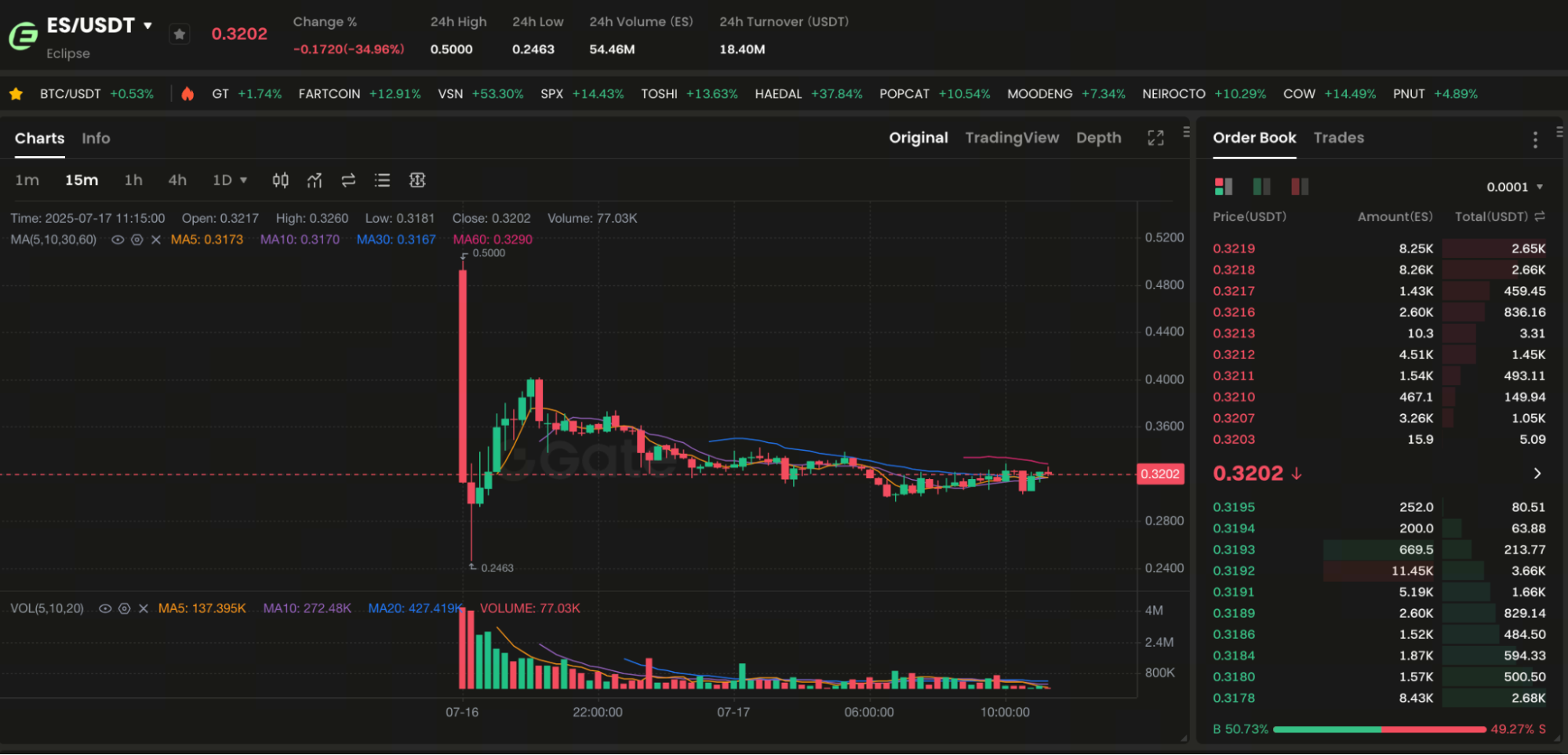What Is Eclipse? Building the Supercomputer of the Blockchain World
What is Eclipse?

Figure:https://www.eclipse.xyz/
Eclipse is a Layer 2 Blockchain protocol built on the Solana Virtual Machine (SVM). It differs from traditional Layer 1 public chains by adopting an Optimistic Rollup architecture, delegating security to the underlying L1 while focusing on extreme performance optimization.
The core goal of Eclipse: to create the strongest SVM Layer 2.
Although SVM itself has high efficiency, Eclipse aims to enhance on-chain computing power by introducing a new client GSVM (GigaCompute SVM), hoping to achieve several orders of magnitude improvement and truly realize decentralized application support at the level of “super computing.”
The Four Design Principles of Eclipse
- Co-design of hardware and software: Optimize networking, storage, and runtime to enhance overall efficiency;
- Cross-layer Optimization: For example, reducing storage latency by pre-fetching transaction data;
- Non-interference: DEX and blockchain games can operate without affecting each other.
- Elasticity: Dynamically add CPU/GPU cores and storage resources based on application requirements.
Eclipse’s innovation in hardware acceleration
Eclipse boldly utilizes modern hardware components such as SmartNIC, FPGA, and GPU to offload part of the transaction preprocessing and even execution to the network layer, achieving latency performance close to that of network cards. At the same time, its caching mechanism and multi-threaded scheduling system can dynamically create “hotspot islands” to allocate independent resources for popular applications, avoiding system congestion.
What can GigaCompute bring?
In GSVM mode, Eclipse can far exceed the current TPS limits of public chains, while introducing Compute Units as a measurement unit to more accurately assess on-chain activities with high computational density, such as AI inference, real-time interactions in on-chain games, and DePIN network control.
Future Prospects and Ecological Applications
Eclipse’s performance advantages make it naturally suitable for high concurrency and high throughput application types, including AI model hosting, on-chain competitive games, real-time control of edge devices, and other emerging fields. When public chains like Ethereum struggle to meet these scenarios, Eclipse provides a performance breakthrough.

Figure:https://www.gate.com/trade/ES_USDT
ES has launched on Gate spot Block, on July 17, 2025, the ES price is approximately $0.32.





